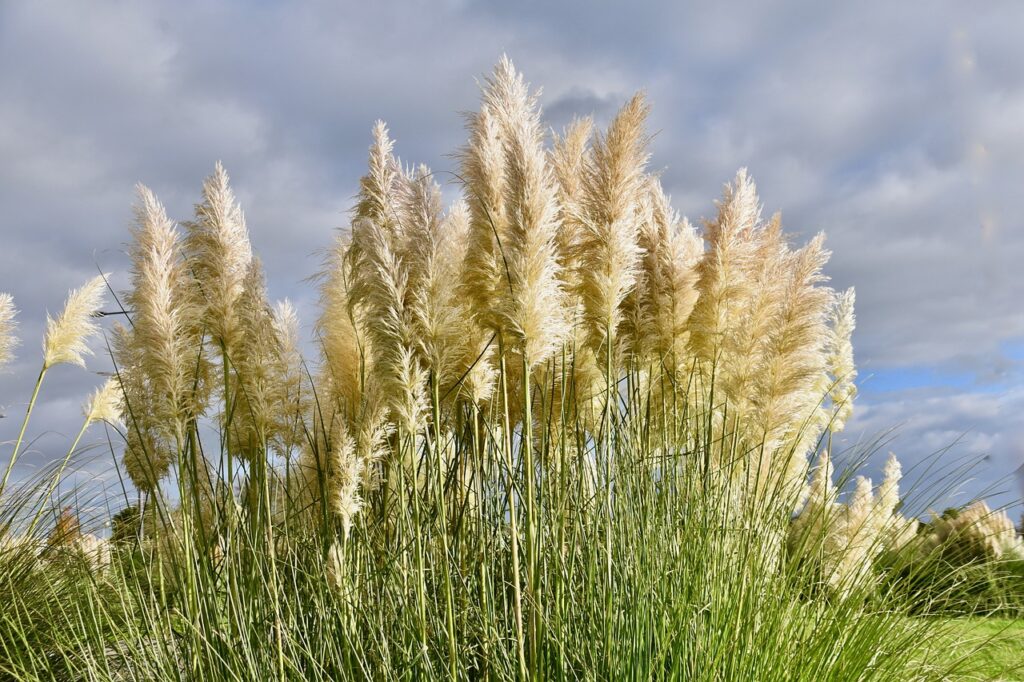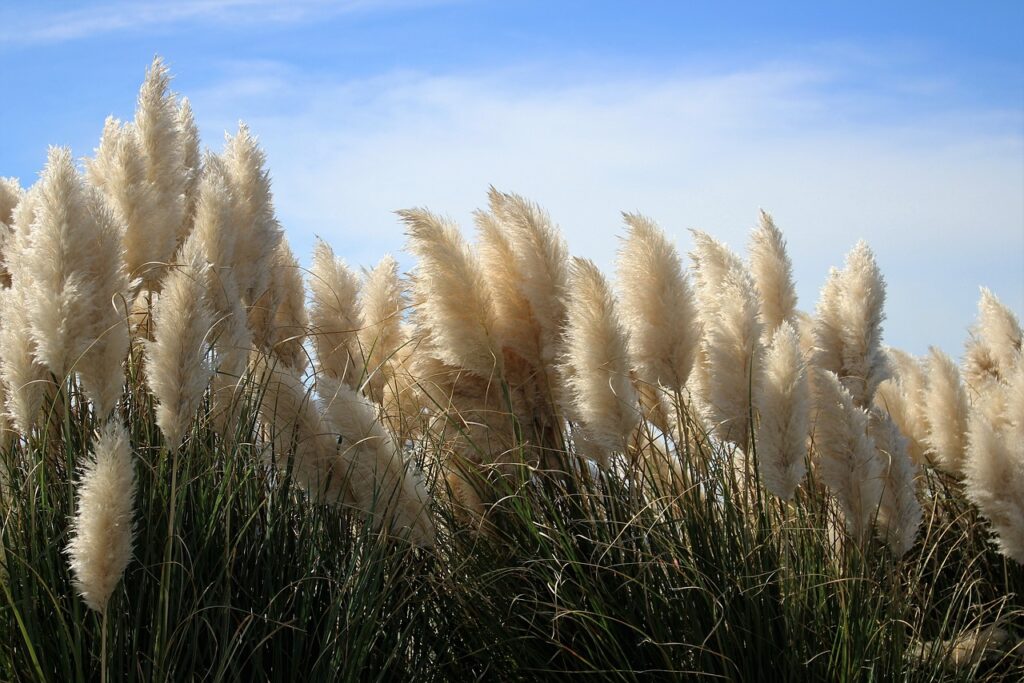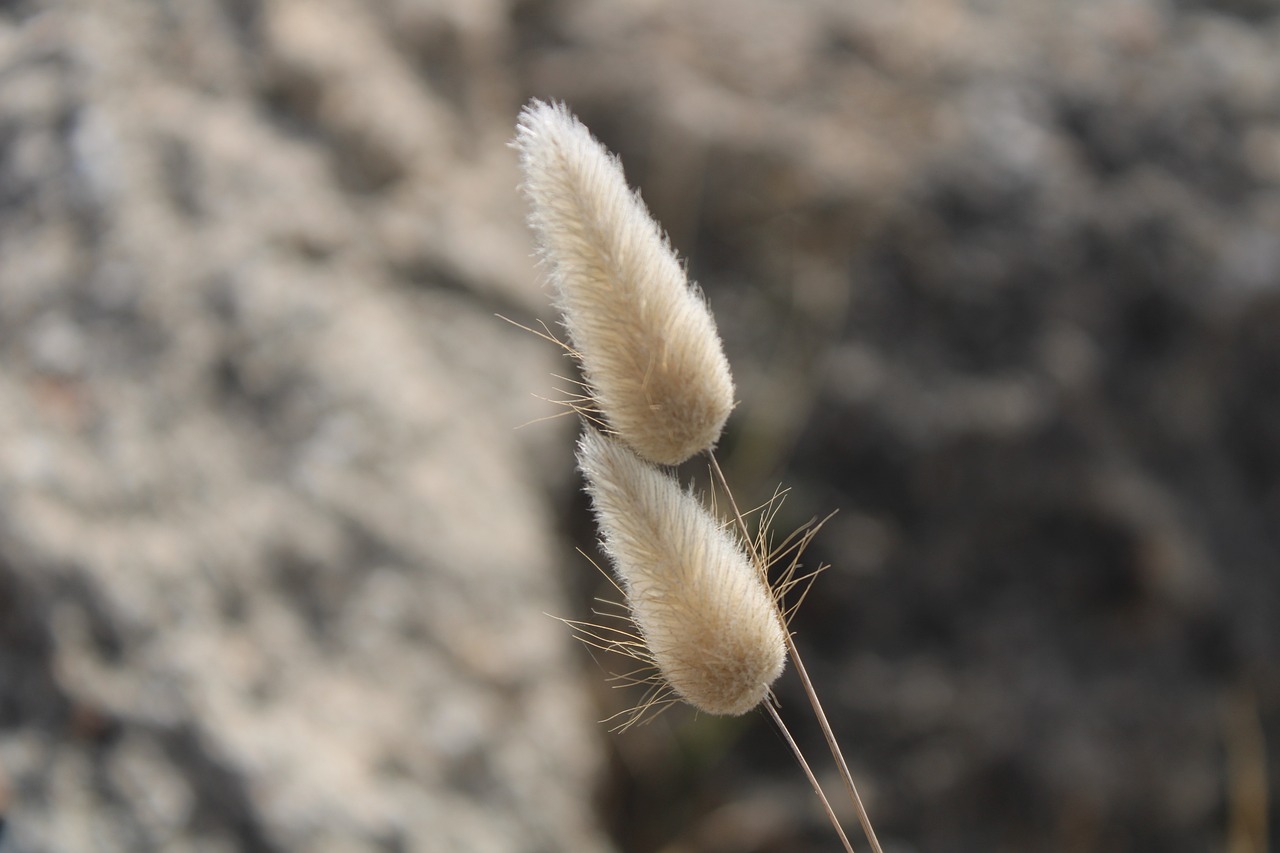Pampas grass: Features and Care

Pampas grass is a popular ornamental plant known for its elegant, feathery plumes and impressive height. Its striking appearance makes it a favorite for both outdoor landscaping and interior decoration.
In this article, I’ll explore the basic information about pampas grass, its cultural background, and essential tips for growing it successfully.
Basic Information
- Scientific name: Cortaderia selloana
- Family: Poaceae (Grass family)
- Origin: South America (particularly the Pampas regions of Argentina and Brazil)
- Appearance: Pampas grass is a perennial plant that can grow 2 to 4 meters tall, featuring large, silver-white plumes that are soft and voluminous. Its long, narrow leaves have sharp edges, so care must be taken when handling them. The plant makes a stunning visual impact in gardens and large open spaces.
- Blooming season: The plumes bloom from late summer to autumn and remain attractive for an extended period.
Cultural Significance Around the World

Pampas grass is widely used in landscape design due to its dramatic appearance. In the Pampas region of South America, it symbolizes the vast and fertile grasslands, playing an important role in local culture and natural scenery. In Argentina, pampas grass is a symbol of the richness of the landscape, forming a crucial part of the area’s natural beauty.
In Europe and North America, pampas grass has become a popular choice for ornamental purposes. In recent years, it has gained attention as a trendy decorative element in interior design and wedding decorations. Its large, graceful plumes serve as natural accents that add a touch of elegance to homes and event spaces.
Additionally, pampas grass is often associated with symbols of “prosperity” and “abundance,” making it a favored plant for decorating garden parties and festive occasions.
Historical Episodes
Pampas grass was introduced to Europe in the late 19th century and quickly became a popular ornamental plant. During the Victorian era in England, it was often seen in the gardens of the upper class, admired for its luxurious and stately appearance.
By the early 20th century, pampas grass had spread to many countries, particularly thriving in regions with a warm climate. However, in some areas, it became an invasive species, posing ecological challenges. Countries like New Zealand and states like California have had issues with pampas grass spreading uncontrollably, necessitating careful management to protect local ecosystems.
Gardening Advice

Pampas grass is easy to grow and is best suited for large, open spaces. It prefers full sun and is highly drought-tolerant, requiring minimal watering once established. Well-draining, nutrient-rich soil is ideal, and it’s important to give the plant enough space to accommodate its large size as it matures.
Pruning should be done from late winter to early spring. Cut back the dried plumes and leaves to promote fresh growth. Be sure to wear gloves when pruning, as the leaves can be sharp and may cause injury. Planting pampas grass in a well-ventilated area can help prevent disease and promote healthy growth.
Although pampas grass is generally cold-tolerant, in extremely cold regions, mulching around the base of the plant can provide extra protection. If you plan to use the plumes as dried flowers, cut them when fully open and hang them in a well-ventilated area to dry.
Conclusion
Pampas grass adds a dramatic and elegant touch to gardens and interiors alike. It is low-maintenance and easy to care for, making it a great choice for gardeners of all experience levels.
Whether you use it to accentuate your garden or incorporate it into home decor as dried plumes, pampas grass offers a timeless beauty. Consider adding pampas grass to your space and enjoy its graceful, ornamental charm.


